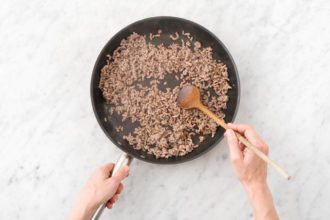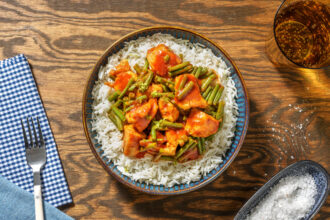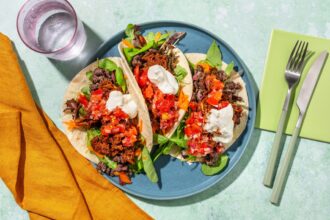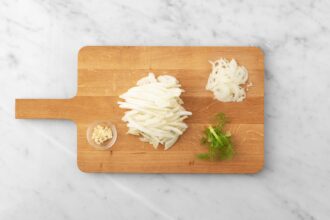How to cook broad beans
September 26, 2024Broad beans, also known as fava beans, are rich in vitamins A and B and contain plenty of protein. This makes them a versatile ingredient, especially beneficial in vegetarian and vegan recipes.
How to cook broad beans
Broad beans can have a bitter flavour and tough texture, but it’s easy to avoid this by cooking them the right way. With fresh broad beans, a little preparation is needed. If you’re using tinned broad beans, it’s hard to go wrong. Find out what you need to do to prepare and cook fresh, dried and tinned broad beans.
How to prepare fresh broad beans
- Place the beans whole into boiling water for a couple of minutes.
- Next, strain them and allow them to cool.
- You can now remove the beans from their casings, ensuring that you retain only the most nutritious and flavoursome part – the beans themselves.
After this stage, the broad beans can be eaten cold or cooked, depending on the type of dish you are preparing.
How to cook fresh broad beans
Once fresh broad beans have been prepared, as outlined above, you can cook them in a number of ways. It is typical to warm them with a little olive oil and seasoning. They require minimal cooking with this method; just gentle warming is all that’s needed to complement a main dish. As an alternative, you can sauté them for a slight crispiness that adds a delightful crunch. You can also simply add fresh broad beans to stews and casseroles. They taste great and can help thicken dishes, as the beans release starches while cooking.
How long to cook dried broad beans
The various cooking techniques suitable for fresh broad beans, such as frying, sautéing, or using in stews, can also be applied to dried broad beans. However, dried broad beans need to be thoroughly soaked before cooking. In most cases, you’ll need to place the dried beans in water overnight to rehydrate them fully.
How long to boil broad beans
To remove their skins, broad beans only need to be placed in boiling water for a few minutes. If you are boiling them to cook them, they’ll also only need a few minutes to heat through. You can quickly prepare tinned broad beans by emptying them into a non-stick saucepan, using the water inside, and then stirring until hot. They’ll be ready to eat in minutes.
All cooking appliances vary. These are guidelines only. Ensure the food is piping hot before serving. Do not reheat.
Baby broad beans
Baby broad beans, which have not yet matured, don’t taste bitter or tough. These can be eaten whole, including the outer skin casing of the pod. Simply remove the stalk, as you would when preparing a runner bean, and enjoy.
FAQs
What are habas fritas?
Habas fritas are a Spanish way of serving broad beans, usually as a snack or sometimes as a tapas dish. They are roasted and then salted, often consumed cold in a similar way to dry roasted peanuts.
How do you prepare and cook broad beans?
Don’t try to remove the outer casing of broad beans until you have boiled them for two minutes. After boiling, take them off the heat, drain, and rinse under cold water until they cool down for easy removal of the outer skin. You can then warm them up in a pan with some oil and seasoning or serve them cold.
Should broad beans be soaked before cooking?
If you have dried broad beans, they should be soaked for several hours – ideally overnight – before cooking them. However, fresh and canned broad beans do not need this step before cooking.
Should broad beans be peeled?
No, you don’t need to peel broad beans to eat them. However, any broad bean pod over five centimetres will have a tough outer skin, which can be chewy and bitter. Therefore, it is best to peel them unless they are the freshest, most delicate broad bean pods.
What is the best way to eat broad beans?
Once cooked and cooled, broad beans can be eaten on their own or in a salad. They are also great as an accompaniment to any meat or fish dish. Warm them in a little olive oil and season. Broad beans are also great in stews, casseroles and soups.
All food products vary. The instructions printed on the food packaging always supersedes those printed in this article and must always be followed.







